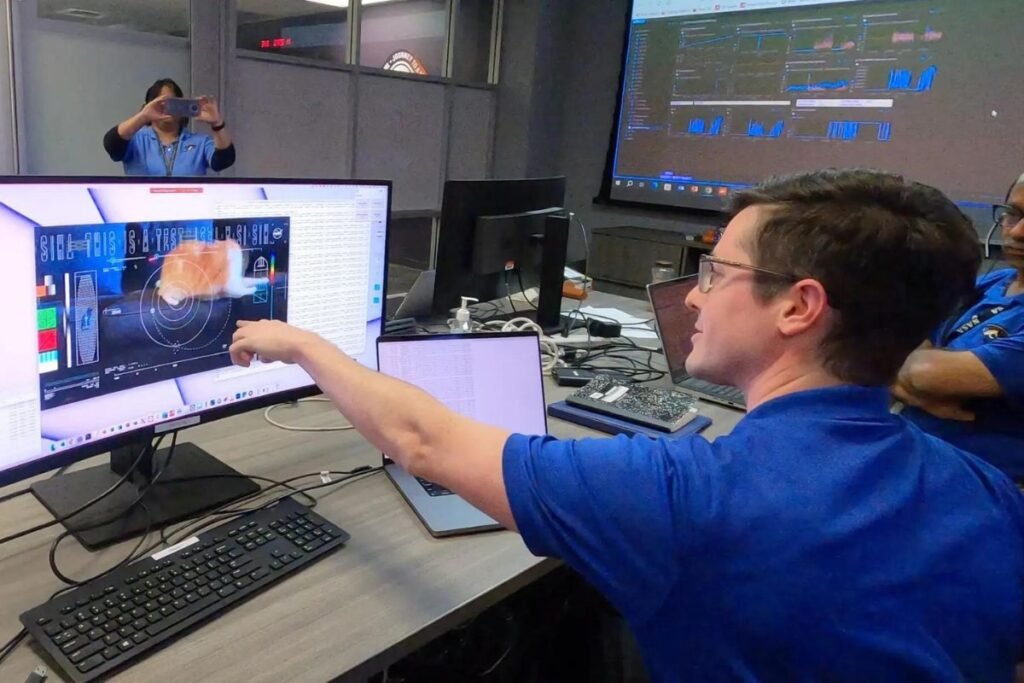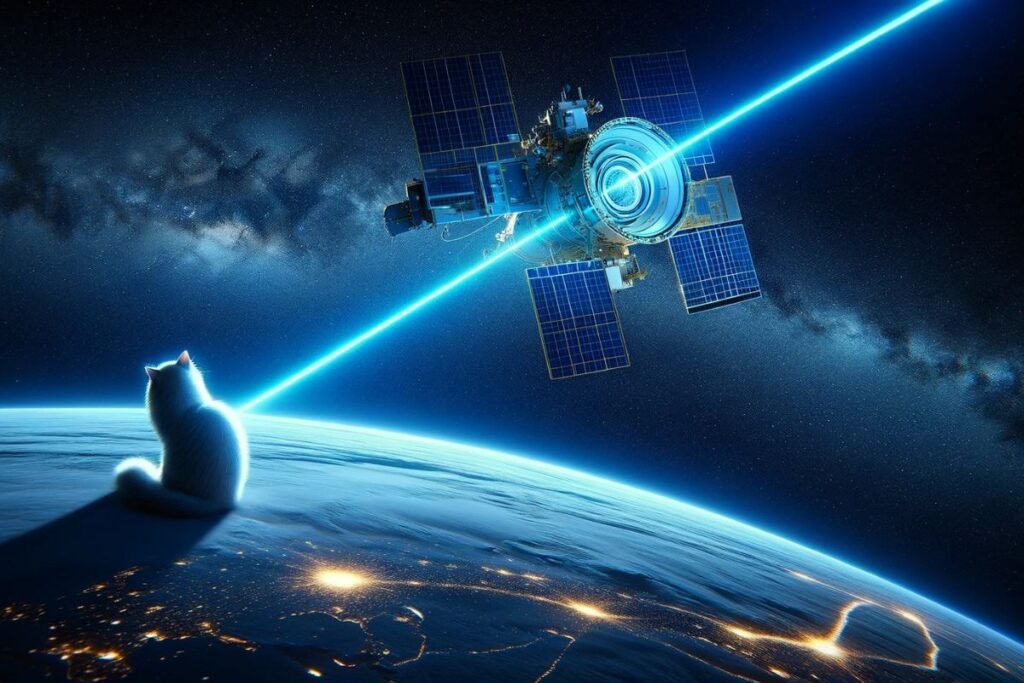A Milestone in Space Communication
NASA’s remarkable achievement in laser communication technology is streaming a high-definition cat video from deep space. This historic feat, which showcased a video of a cat named Taters, took place an unprecedented 18.6 million miles from Earth.
The Deep Space Optical Communications Experiment

This successful transmission is part of NASA’s Deep Space Optical Communications (D.S.O.C.) experiment. Essential for future deep space exploration, including potential human missions to Mars. The experiment is a pivotal advancement in extraterrestrial communication.
Innovative Laser Technology at Play

Employing laser communications instead of traditional radio frequencies, D.S.O.C. enables the transfer of large data volumes at higher speeds over extensive distances. The Psyche spacecraft played a crucial role in this demonstration, marking a significant progression in space communication technologies.
Implications for Future Space Missions
This technological breakthrough is crucial for future space missions, particularly for maintaining constant communication in ventures like manned missions to Mars. Reliable, high-speed communication is fundamental for the success of extended space explorations.
Challenges and Future Prospects
Despite the success, Dr. Biswas highlights the ongoing need for advancements in ground infrastructure to make this technology fully operational and reliable. The next objective is to transmit data over a distance of 186 million miles, pushing the boundaries of current capabilities.
Our Honest Opinion
NASA’s success in streaming a cat video from deep space isn’t just a quirky achievement; it represents a significant leap in space communication technology. It’s impressive how a simple cat video can exemplify a technology that might become crucial for interplanetary communication. This experiment is a testament to human creativity and the relentless pursuit of exploration.
See more articles related to space exploration.
You may also like:
- Samsung Galaxy Ring: A Revolution in Wearable Technology
- Unveiling Artificial Intelligence in 2024: Advances, Challenges, and the Future of AI
- Solar Shield in Space: A Bold Vision for Climate Change Mitigation
- Wind Trees: Transforming Urban Spaces with Renewable Energy
- Mastercard AI Revolution: A Leap in Fraud Detection
Source: The New York Times

